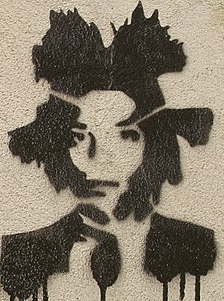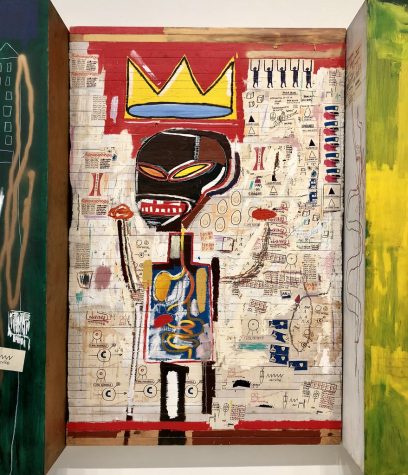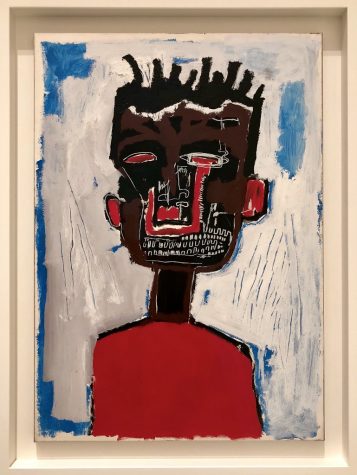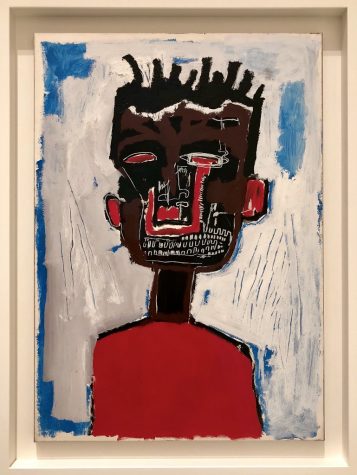Jean-Michel Basquiat: The New Era
February 20, 2020

The 1960s marked an intense time for the Civil Rights movement. On July 2nd, 1964 the Civil Rights Act of 1964 was signed and prevented discrimination and segregation that was targeted towards the Blacks. The Sixties are one of the most impacting eras for the United States. The Black Americans were only then receiving their voting rights and basic equity to do things such as, going to better schools, back then the “white” schools, as well as receiving fair housing. However, during this era there was also a boom of Black Culture, unifying African-Americans and helped them gain strength to keep fighting for their rights. It reminded them that they were special and no different from any other human on this earth. Their culture was and continues to be full of emotions. One way that this boom was reflected involved the arts, including music, dance, literature, and painting. People embraced their right to express their creativity and to take our understanding in many new and wonderful directions.
One such artist who is a product of this era made his influence known across the world: Jean-Michel Basquiat. Born in Brooklyn, New York on December 22nd, 1960 to a Haitian father and a Puerto Rican mother, he had grown up dealing with inequalities. He had a tough life, being forced to live on the streets, struggling with violence and poverty. It started with the divorce of his parents, leading to unstable homes, racism, and becoming aware of the socio-economic realism of the working class. He had dropped out of high school by the age of 17. His outlet, his expression for his anger and thoughts of the world came in the form of graffiti.

However, despite his hardships and tough upbringing, he started doing what he loved. Basquiat became a self-taught artist. He was doing graffiti in New York city under the name “SAMO” and selling postcards and sweatshirts with his neo-expressionist art.
Soon Basquiat’s Neo-Expressionist art was noticed on the streets, which led to a collaboration with Andy Warhol during the 1980s. That was when his career took off. He had many shows to display his original art pieces all over the globe and became very well-known, as well as loved by critics and consumers who had no problem paying up to fifty thousand dollars for one of his original pieces. He was and continues to be a large inspiration for colored artists all over the nation.
As his popularity grew, his personal issues and struggles also grew. Basquiat faced excessive drug abuse problems and went to Hawaii to become sober. Shortly after, he went back to New York where he died on August 12, 1988 due to a heroin overdose.

Being from an exceptionally diverse background and being an immensely popular artist in the 1980s, Basquiat was credited to cultivating the African American and Latino insight into the elite art world. His early pieces of art had the crown symbol, which for him represented and honored black people as royalty and saints.
He had always shown respect for those who fought for equal rights and for those who represented the African-American community. For example, Basquiat was largely inspired by Muhammad Ali and Joe Louis and painted “Untitled: The Boxer”.
His Neo-Expressionist artistic choices were modern and emotional, showing viewers the dark sides and harsh side of reality. Jean-Michel Basquiat was not just a black artist, but an outstanding artist in general. He created inspiration and a pathway for other artists who needed that little push.
Today, his artwork is displayed in posh areas in the United States such as The Broad in Los Angeles, which this writer was able to visit and appreciate tremendously. His work can also be seen at The Soho Contemporary Art Museum in New York. His artwork has increased in value over the years due to the emotions conveyed in his paintings. Basquiat definitely is one of the most influential and impacting artists who has ever existed.

Works Cited:
Article Title
Jean-Michel Basquiat Biography
Author
Biography.com Editors
Website Name
The Biography.com website
URL
https://www.biography.com/artist/jean-michel-basquiat
Access Date
February 12, 2020
Publisher
A&E Television Networks
Last Updated
April 12, 2019
Original Published Date
April 1, 2014





